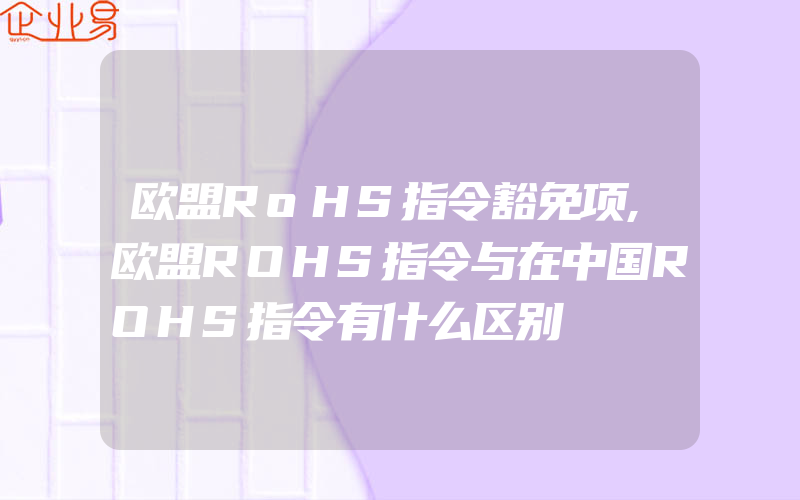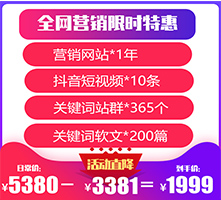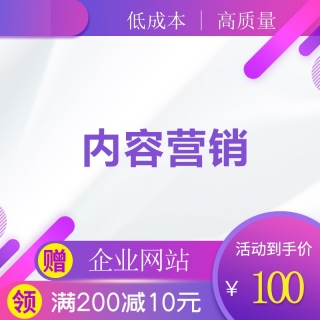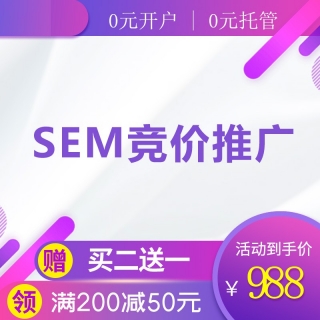欧盟ROHS指令豁免项
欧盟ROHS指令豁免项
由于技术问题,有部分资料或者产品的制造技术还做不到ROHS指令要求,在经过向欧盟的特殊申请后,以下项目能够获得豁免(部分豁免是有期限的):
RoHS豁免欧盟RoHS
物品豁免条款
1紧凑型荧光灯中的汞含量不超过每灯5毫克
2直管荧光灯中的汞,通常用途不超过:
卤磷酸盐10毫克
三磷酸盐,正常寿命5毫克
三磷酸盐,长寿命8毫克。
3用于特殊用途的直管荧光灯中的汞。
4本附件中未特别提及的其他灯中的汞。
5阴极射线管,电子元件和荧光灯管中的铅。
6铅作为钢中的合金元素,含铅量高达0.35%,铝含铅量高达0.4%,含铜量高达4%的铜合金。
7- 高熔点型焊料中的铅(即含铅量在85%以上的铅基合金)
lead in solders for servers, storage and storage array systems, network infrastructure equipment for switching, signalling, transmission as well as network management for TELECommunications
lead in electronic CEramic parts (e.g. piezoelectronic devices).
8 Cadmium and its compounds in electrical contacts and cadmium plating except for applications banned under Directive 91/338/EEC (1) amending Directive 76/769/EEC (2) relating to restrictions on the marketing and use of certain dangerous substances and preparations
9 Hexavalent chromium as an anti-corrosion of the carbon steel cooling system in absorption refrigerators.
10 Lead used in compliant pin connector systems
11 Lead as a coating material for the thermal conduction module c-ring
12 Lead and cadmium in optical and filter glass
13 Lead in solders consisting of more than two elements for the connection between the pins and the package of microprocessors with a lead content of more than 80% and less than 85% by weight
14 Lead in solders to complete a viable electrical connection between semiconductor die and carrier within integrated circuit Flip Chip packages
15 DecaBDE in polymeric applications
16 Lead in lead-bronze bearing shells and bulbs
17 Lead in linear incandescent lamps with silicate coated tubes
18 Lead halide as radiant agent in High Intensity Discharge (HID) lamps used for professional reprography applications
19 Lead as activator in the fluorescent powder (1% lead by weight or less) of discharge lamps when used as sun tanning lamps containing phosphors such as BSP (BaSi2O5:Pb) as well as when used as specially lamps for diazo-printing reprography, lithography, insect traps, photochemical and curing processes containing phosphors such as SMS ((Sr,Ba)2MGSi2O7:Pb)
20 Lead with PbBiSn-Hg and PbInSn-Hg in specific compositions as main amalgam and with PbSn-Hg as auxiliary amalgam in very compact Energy Saving Lamps (ESL)
21 Lead oxide in glass used for bonding front and rear substrates of flat fluorescent lamps used for Liquid Crystal Displays (LCD)
22 Lead and cadmium in printing inks for the application of enamels on borosilicate glass.
23 Lead as impurity in RIG (rare earth iron gamet) Faraday rotators used for fibre optic communication systems.
24 Lead in finishes of fine pitch components other than connectors with a pitch of 0.65mm or less with NiFe lead frames and lead in finishes of fine pitch components other than connectors with a pitch of 0.65mm or less with coppler lead frames.
25 Lead in solders for the soldering to machined through hole discoidal and planar array ceramic multilayer capacitors.
26 Lead oxide in plasma display panels (PDP) and surface conduction electron emitter displays (SED) used in structural elements, notably in the front and rare glass dielectric layer, the bus electrode, the black stripe, the address electrode, the barrier ribs, the seal frit and frit ring as well as in print pastes.
27 Lead oxide in the glass envelope of Black Light Blue (BLB) lamps.
28 Lead alloys as solder for transducers used in high-powered (designated to operate for several hours at acoustic power levels of 125 dB SPL and above) loudspeakers.
29 Hexavalent chromium in corrosion preventive coatings of unpainted metal sheetings and fasterners used for corrosion protection and Electromagnetic Interference Shielding in equipment falling under category three of Directive 2002/96/EC (IT and telecommunications equipment). Exemption granted until 1 July 2007.
30Lead bound in crystal glass as defined in Annex I (Category 1,2,3 and 4) of Council Directive 69/493/EEC
2009年6月11日,欧盟OJ刊登了2009/443/EC,新增了6项RoHS指令的豁免,分别如下:
33.Lead insolders for the soldering of thin copper wires of 100 μm diameter andless in power transformers. 电力变压器中直径100微米及以下细铜线所用焊料中的铅
34.Lead in cermet-based trimmer potentiometer elements. 金属陶瓷质的微调电位计中的铅
35.用于光电耦合器的光敏电阻器中的镉应用于专业音响设备,直至2009年12月31日。2009年12月31日前专业音频设备的光耦合器中使用的光敏电阻的镉
36.直流等离子显示器中的汞用作阴极溅射抑制剂,每个显示器的含量高达30毫克,直到2010年7月1日。2010年7月1日前直流等离子显示器中阴极溅射抑制剂中的汞,其含量不得超过30毫克/显示器
37.基于硼酸锌玻璃体的高压二极管镀层中的铅。以硼酸锌玻璃体为基础的高压二极管的电镀层的铅
38.用于铝粘结氧化铍的厚膜浆料中的镉和氧化镉。用氧化铍连接铝制成的厚膜浆料中镉和氧化镉
此前,在6月5日,欧盟还刊登了四百二十八分之二千○九/ EC,从2011年1月1日起,将原豁免的第22点“光纤通讯系统稀土铁石榴石法拉第旋转器中作为杂质的铅“从豁免列表中移除。
其实符合RoHS一直都有在增加豁免条例。
今日通过对《欧盟RoHS指令豁免项》的学习,相信你对认证有更好的认识。假如要办理相关认证,请联络我们吧。
欧盟ROHS指令与在中国ROHS指令有什么区别
欧盟ROHS指令与在中国ROHS指令有什么区别?
欧盟ROHS认证(有害物质限用指令)已定于2006年7月1日付诸实施,自该日起,所有在欧洲销售的电子电气设备中限用有害物质的含量必须符合指令中的严格规定。那么欧盟ROHS指令与在中国ROHS指令有什么区别?
一、中国ROHS与欧盟ROHS指令不同之处:
1、颁布和实施时间不同
中国《管理办法》2006年2月28日颁布,2007年3月1日开始实施,有毒有害物质或元素限制和禁止时间尚未明确
欧盟ROHS指令2003年2月13日《指令》颁布,2004年8月13日转为欧盟成员国法律(法规),2006年7月1日开始实施
2、贯彻、实施的条件不同
中国《管理办法》贯彻实施必须制定“标准”和“目录”,制定“目录”必须“标准”支撑
欧盟ROHS指令《指令》的贯彻只必须标准的支撑
3、限制与禁止方式不同
中国《管理办法》有毒有害物质或元素的限制与禁止合格性评定采取3C认证模式
欧盟ROHS指令有毒有害物质或元素的限制与禁止采取自我声明方式。
4、法律效力不同
中国《管理办法》无须转换低一级的法律规范性文件就能够直接实施
欧盟ROHS指令《指令》无直接约束力,必须转换成欧盟成员国法律(法规)才能够实施
5、调整对象不同
中国《管理办法》调整对象为子电信息产品
欧盟ROHS指令调整对象对交流电不超过1000伏特、直流电不超过1500伏特的电子电器设备
6、推进方式不同
中国《管理办法》有毒有害物质或元素控制的监督管理采用目录管理模式,目录以“穷举法”方式形成
欧盟ROHS指令有毒有害物质或元素控制在技术尚不够成熟、经济上不可行时采用“排除法”予以“豁免”
二、中国ROHS与欧盟ROHS指令的相同点:
1、都是法律规范性文件
2、主要目的是为实现有毒有害物质或元素控制(禁止使用和减量化)
3、涉及贸易活动(货物贸易)
4、限制和禁止使用的有毒有害物质或元素为:铅、汞、镉、六价格、多溴联苯(PBB)、多溴二笨醚(PBDE)
今日通过对《欧盟ROHS指令与在中国ROHS指令有什么区别?》的学习,相信你对认证有更好的认识。假如要办理相关认证,请联络我们吧。
 客服热线:
客服热线:






